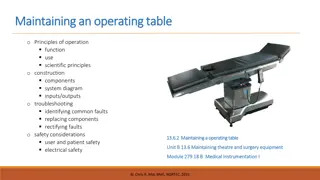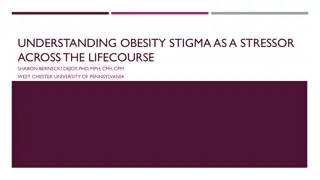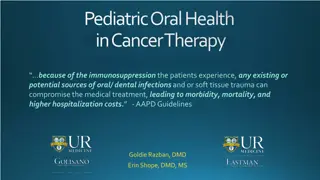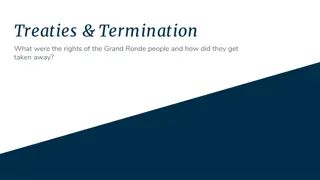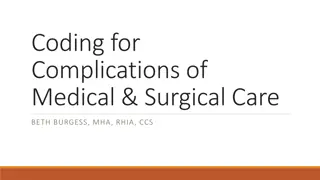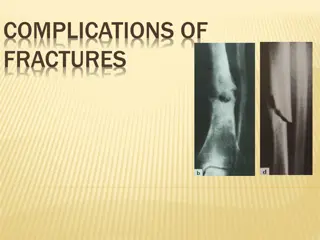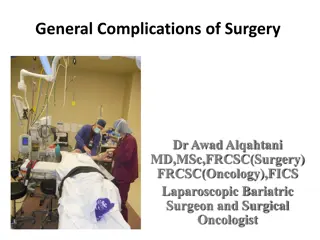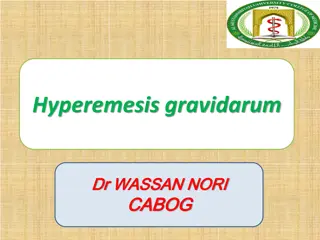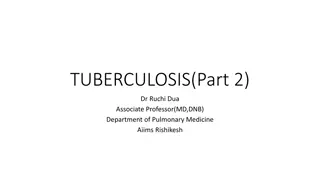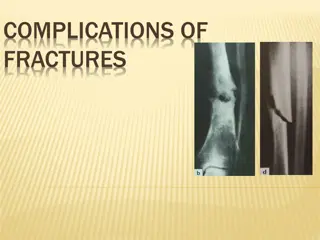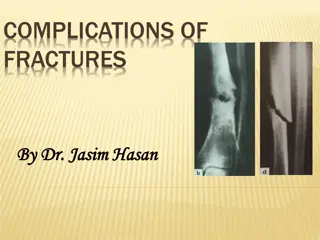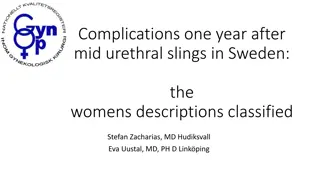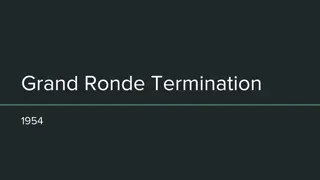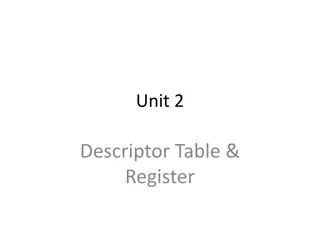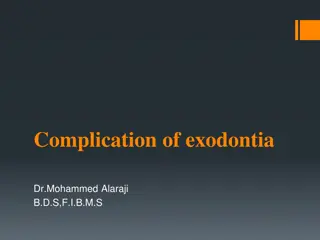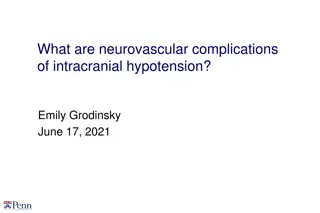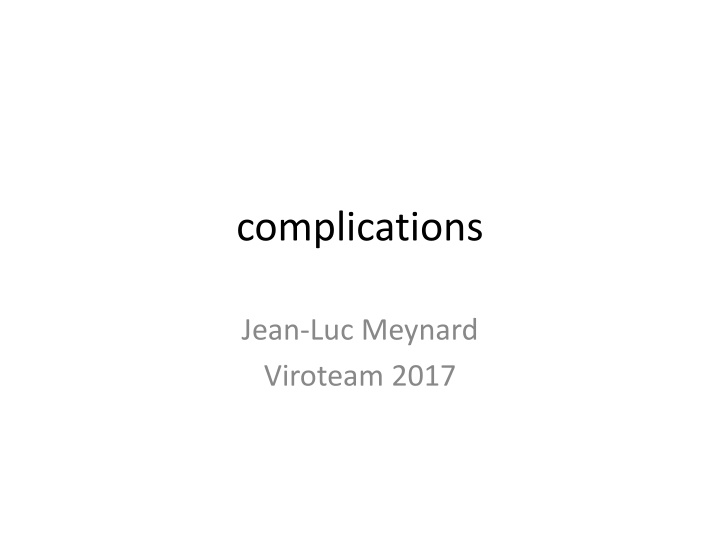
HIV Treatment Studies and Fracture Risk Assessment
Explore key findings from the NEAT 022 study on switching HIV treatments, analyzing lipid profile changes and virologic success. Additionally, learn about the ANRS CO4 substudy examining the relationship between antiretroviral therapy and fracture risk in HIV patients. No evidence suggests increased fracture risk with certain antiretrovirals.
Download Presentation

Please find below an Image/Link to download the presentation.
The content on the website is provided AS IS for your information and personal use only. It may not be sold, licensed, or shared on other websites without obtaining consent from the author. If you encounter any issues during the download, it is possible that the publisher has removed the file from their server.
You are allowed to download the files provided on this website for personal or commercial use, subject to the condition that they are used lawfully. All files are the property of their respective owners.
The content on the website is provided AS IS for your information and personal use only. It may not be sold, licensed, or shared on other websites without obtaining consent from the author.
E N D
Presentation Transcript
complications Jean-Luc Meynard Viroteam 2017
NEAT 022: Switch From Boosted PI to DTG in Suppressed Pts With High CV Risk International, randomized, open-label phase IV study Primary endpoints at Wk 48: proportion with HIV RNA < 50 copies/mL (ITT), change in total plasma cholesterol Wk 48 Wk 96 Immediate switch to DTG + 2 NRTIs (n = 205) Pts with stable HIV-1 RNA < 50 c/mL on PI/RTV + 2 NRTIs, high CV risk,* no resistance mutations, no VF (N = 415) *> 50 yrs of age and/or Framingham risk score > 10% at 10 yrs. NRTIs to remain the same throughout study. Continue PI/RTV + 2 NRTIs (n = 210) Deferred switch to DTG + 2 NRTIs Baseline NRTI backbones: FTC/TDF, 64.8%; ABC/3TC, 31.3% Gatell JM et al. IAS 2017. Abstract TUAB0102. ClinicalTrials.gov. NCT02098837. Slide credit: clinicaloptions.com
NEAT 022: Key Findings Switching to DTG associated with improved lipid profile vs continuing boosted PI through Wk 48 Switching to DTG noninferior to continuing boosted PI through Wk 48 93.195.2 100 DTG + 2 NRTIs PI/RTV + 2 NRTIs DTG + 2 NRTIs PI/RTV + 2 NRTIs 10 P = .286 ITT Population (%) 4.2 80 From BL to Wk 48 (%) 5 1.12.5 2.0 0.7 0.5 0.4 Treatment difference: - 2.1% (95% CI: -6.6% to 2.4%) Mean Change 0 60 -5 40 -7.0 -7.7 -10 -8.7 20 -11.3 P < .001 4.94.4 P < .001 2.00.5 -15 P < .001 P < .001 0 -20 -18.4 Virologic Success * Virologic Nonreso nse No Virologi c Data *HIV-1 RNA < 50 copies/mL. P < .001 -25 TC Non HDL -C TG LDL- C HDL- C TC/H DL Ratio No emergent resistance in pts with VF No significant differences in grade 3/4 AEs, serious AEs, AE-related d/c Gatell JM, et al. IAS 2017. Abstract TUAB0102. Reproduced with permission. Slide credit: clinicaloptions.com
ANRS CO4 Substudy: ART and Fracture Risk Observational case-control study evaluating the risk of low-energy fracture associated with ART in HIV-infected pts 2000-2010 Cases were pts experiencing low-energy osteoporotic fracture (n = 254); controls were randomly selected from database (n = 376) No evidence of increased fracture risk with TDF or PIs Adjusted Fracture OR by Conditional Logistic Regression Models 1-3 (95% CI) ARV 1: By Cumulative Exposure 2: By Any Exposure 3: By Exposure Variable* TDF 1.03 (0.86-1.24) 1.04 (0.54-2.02) 1.24 (0.69-2.24) ATV 1.62 (0.85-3.08) 1.39 (0.99-1.94) 1.43 (1.01-2.02) Any PI 1.01 (0.92-1.11) 0.98 (0.73-1.31) 1.10 (0.58-2.08) 3TC 1.24 (0.53-2.92) 1.24 (0.52-2.98) 0.83 (0.73-0.95) ABC 0.99 (0.87-1.13) 1.41 (0.81-2.45) 1.40 (0.80-2.43) EFV Adjusted for transmission group, prior AIDS-defining event, location, BMI, smoker status, alcohol consumption, prior systemic glucocorticoid, period of enrolment. *Variable with lowest Akaike criterion value (best goodness of fit) for each ARV; exposure Y/N for all ARVs except EFV, ATV, DRV, FPV-APV, or FTC with cumulative duration of exposure. 0.84 (0.51-1.40) 0.81 (0.69-0.95) 0.82 (0.70-0.96) Slide credit: clinicaloptions.com Costagliola D, et al. IAS 2017. Abstract WEAB0103.
ZEST: Zoledronic Acid vs TDF Switching to Improve BMD in Pts Receiving TDF-Based ART Randomized study comparing switch to non TDF-based ART vs continuing TDF- based ART + zoledronic acid* (5 mg IV at Mos 0 and 12) in pts with low BMD and virologic suppression on TDF-based ART (N = 87) Lumbar Spine BMD Change at 24 Mos Change in BMD From BL (%) Mos Continue TDF + ZOL (n = 43) P TDF Switch (n = 42) Continue TDF + ZOL TDF switch Outcome, 24 Mos Value 7.4 8 6.1 Femoral neck BMD from BL, % P < .001 4.1 2.1 .03 6 P < .001 Total hip BMD from BL, % 4 4.6 2.6 .009 2.9 2.9 2 Fractures (events), % 2 17 .03 0 Fractures (pts), % 2 10 .20 24 0 12 Mean eGFR -6.0 3.3 .003 *Calcium and vitamin D supplementation (as indicated) were also provided. T-score -1.0 at spine (L1- L4) or left femoral neck by DXA. Primary endpoint, ITT population. Potential limitations: study conducted before TAF available; possible AE concerns with long-term use of bisphosphonates Slide credit: clinicaloptions.com Hoy J, et al. IAS 2017. Abstract WEAB0106LB. Reproduced with permission.
NA-ACCORD: Smoking, HTN, Cholesterol Primary Drivers to MI Risk in HIV Infection Retrospective meta-analysis of pts with validated MI events from 7 clinical cohorts within NA-ACCORD from 1/2000 to 12/2013 (N = 29,515)[1] Adjusted Population Attributable Fractions for MI,*[1]% Smoking Elevated TC HTN All 3 (smoking, TC, HTN) DM CKD CD4+ cell count VL AIDS HCV coinfection BMI MI Subgroup 36 39 39 38 43 41 Traditional MI risk factors Population attributable fraction: proportion of MIs avoidable by prevention of modifiable HIV-related and traditional MI risk factors 86 2 3 10 6 2 8 4 3 347 pts (1.2%) had type 1 MI due to plaque rupture HIV-related MI risk factors 14 8 -1 14 Sensitivity analysis added for 16,687 pts (57%) with BMI data, 227 had type 1 MI *Adjusted for age, sex, race, and all listed risk factors. P < .05 ~ 40% MI reduction achievable through prevention of smoking, elevated TC, or HTN, regardless of BMI In separate study (D:A:D), smoking cessation reduced overall cancer rate after 1 yr, except lung cancer (rate high even after > 5 yrs)[2] 1. Althoff KN, et al. CROI 2017. Abstract 130. 2. Shepherd L, et al. CROI 2017. Abstract 131. Slide credit: clinicaloptions.com
Original Article Enhanced Prophylaxis plus Antiretroviral Therapy for Advanced HIV Infection in Africa James Hakim, F.R.C.P., Victor Musiime, Ph.D., Alex J. Szubert, M.Sc., Jane Mallewa, M.D., Abraham Siika, M.Med., Clara Agutu, M.B., Ch.B., M.P.H., Simon Walker, M.Sc., Sarah L. Pett, Ph.D., Mutsa Bwakura- Dangarembizi, M.Med., Abbas Lugemwa, M.D., Symon Kaunda, M.B., Ch.B., Mercy Karoney, M.Sc., Godfrey Musoro, M.Sc., Sheila Kabahenda, M.B., Ch.B., Kusum Nathoo, M.B., Ch.B., Kathryn Maitland, Ph.D., Anna Griffiths, Ph.D., Margaret J. Thomason, Ph.D., Cissy Kityo, M.Sc., Peter Mugyenyi, Ph.D., Andrew J. Prendergast, D.Phil., A. Sarah Walker, Ph.D., Diana M. Gibb, M.D., for the REALITY Trial Team N Engl J Med Volume 377(3):233-245 July 20, 2017
REALITY: Enhanced OI Prophylaxis at ART Initiation in Immunocompromised Pts Prospective, randomized trial conducted in Zimbabwe, Malawi, Uganda, and Kenya Primary endpoint: mortality at 24 wks Additional randomizations conducted in factorial fashion* Enhanced Prophylaxis initiated at time of ART (n = 906) ART-naive HIV-infected adults and children older than 5 yrs of age with CD4+ cell counts < 100 cells/mm3 (N = 1805) Standard Prophylaxis initiated at time of ART (n = 899) *Raltegravir added to ART for 12 wks; food supplementation for 12 wks. Cotrimoxazole, isoniazid/vitamin B6 300/25 mg/day for 12 wks (IPT), fluconazole 100 mg/day for 12 wks, azithromycin 500 mg/day for 5 days, albendazole 400 mg (single dose). Cotrimoxazole, IPT added after 12 wks (except in Malawi). In both prophylaxis regimens, cotrimoxazole and IPT given at half doses if younger than 12 yrs of age. Hakim J, et al. AIDS 2016. Abstract FRAB0101LB. Slide credit: clinicaloptions.com
Characteristics of the Patients at Randomization. Hakim J et al. N Engl J Med 2017;377:233-245
Overall Mortality and Cause of Death at 48 Weeks. Hakim J et al. N Engl J Med 2017;377:233-245
Secondary and Other Outcomes at 48 Weeks. Hakim J et al. N Engl J Med 2017;377:233-245
Conclusions Among HIV-infected patients with advanced immunosuppression, enhanced antimicrobial prophylaxis combined with ART resulted in reduced rates of death at both 24 weeks and 48 weeks without compromising viral suppression or increasing toxic effects.
Incidental lung cancers and positive computed tomography images in people living with HIV Lung cancer screening with low-dose computed tomography (LDCT) of high-risk groups in the general population is recommended by several authorities. This may not be feasible in people living with HIV (PLWHIV) due to higher prevalence of nodules. We therefore assessed the prevalence of positive computed tomography (CT) images and lung cancers in PLWHIV. The Copenhagen comorbidity in HIV infection (COCOMO) study is an observational, longitudinal cohort study. Single-round LDCT was performed with subsequent clinical follow-up (NCT02382822). Outcomes included histology-proven lung cancer identified by LDCT and positive CT images (noncalcified nodules) in the entire cohort and in the high-risk group (>50 years of age and >30 pack-years). We also assessed the procedures and adverse events, and clinical factors associated with a positive CT image. Ronit A , AIDS 2017
Incidental lung cancers and positive computed tomography images in people living with HIV LDCT was performed in 901 patients, including 113 at high risk for lung cancer. A positive image was found in 28 (3.1% of the entire cohort and 9.7% of the high-risk group). Nine patients (all in the high-risk group) had invasive procedures undertaken with no serious adverse events. Lung cancer (stages IA, IIA, and IIIA) was diagnosed in three patients from the high-risk group (2.7%). CD4 cell count less than 500 cells/ml and CD4 nadir less than 200 cells/ml were each independently associated with increased odds of a positive image odds ratio 2.32 [95% confidence interval: 1.01 5.13, P 0.04] and odds ratio 2.63 [95% confidence interval: 1.13 6.66, P 0.03]. Randomized LDCT screening trials in PLWHIV are nonexistent, but these findings are comparable with screening rounds from the general population in terms of prevalence of lung cancer and positive CT images
Metabolic syndrome and obesity are the cornerstones of liver fibrosis in HIV-monoinfected patients: results of the METAFIB study AIDS 2017
Objectives To assess the impact of MetS on the proportion and severity of liver fibrosis in HIV-monoinfected patients
Methods Exposed nonexposed cohort of HIV1- monoinfected patients without excessive alcohol consumption, HBV/HCV coinfections or other causes of chronic liver disease Exposure defined as the presence of MetS (IDF criteria) Patients nonexposed to MetS matched to exposed patients, on age, sex and duration of HIV Liver fibrosis: liver stiffness measurement (LSM,Fibroscan) Insulin resistance: HOMA-index and leptin/adiponectin Circulating inflammatory markers: Adipokines: leptin (fat mass), adiponectin, IL6, usCRP Macrophage activation: sCD163 and CD14
Results Number of screened patients: n = 478 Number of included patients: 63 patients with invalid results (19 failures and 44 unreliable results) N=468 (246 MetS+, 222 MetS-) Number of patients with valid LSM: N=405 (203 MetS+, 202 MetS-)
Prevalence of liver fibrosis 50 Fibrosis 7kPa ( F2) Fibrosis 8.3kPa ( F3) Fibrosis 10.2kPa (F4) LSM 10.3 kPa ( F4) LSM 7.1 kPa ( F2) 45 LSM 8.7 kPa ( F3) Proportion of patients by fibrosis stage (%) 40 35 30 p<0.0001 25 20 15 p<0.0001 10 5 0 Study population, n=405 Patients with MetS, n=203 Patients without MetS, n=202
Discussion 1. Liver fibrosis assessment based on noninvasive marker (fibroscan) 1. No liver histology 1. No analysis of liver steatosis and NASH
Study population (1) Patients Patients without MetS, n=202 52 (8) Study population n=405 53 (9) P value with MetS, n=203 Mean age, years, (SD) 54 (9) 0.02 Males, n (%) 359 (89) 183 (90) 176 (87) 0.4 Mean BMI, kg/m2, (SD) 24.6 (5.3) 26.0 (4.7) 23.2 (5.5) 0.0001 Obesity: BMI 30kg/m2 n (%) 34 (8.4) 27 (13.3) 7 (3.5) 0.0001 Type 2 Diabetes (n=404), n (%) 33 (8.2) 31 (15.3) 2 (1.0) 0.0001 Duration of HIV infection (years) 17.0 (7.0) 16.9 (6.8) 17.0 (7.3) 0.9 CD4 cells count (per mm3) 617 (257) 628 (239) 607 (273) 0.2 HIV1-VL<20 copies/mL (n,%) 323 (79.8) 160 (78.8) 163 (80.7) 0.7 Metabolic parameters HOMA score 2.5 (n,%), 116 (29) 99 (49) 17 (8.5) 0.0001 HDL-cholesterol (mmol/L) 1.21 (0.37) 1.06 (0.30) 1.36 (0.37) 0.0001 LDL-cholesterol (mmol/L) 2.95 (1.04) 2.80 (1.25) 3.11 (0.74) 0.0001 Triglycerides (mmol/L) 1.89 (1.78) 2.40 (1.65) 1.37 (1.75) 0.0001 Glucose (mmol/L) 5.47 (1.20) 5.85 (1.48) 5.09 (0.64) 0.0001
Study population (2) Patients Patients without MetS, n=202 Study population n=405 P value with MetS, n=203 Hepatic parameters AST (IU/L) 29 (20) 31 (19) 27 (20) 0.0001 ALT (IU/L) 34 (27) 41 (34) 28 (15) 0.0001 GGT (IU/L) 52 (52) 62 (64) 42 (33) 0.0001 Serum inflammatory markers Hs CRP (mg/L) n=396 n=199 n=197 3.50 (4.94) 3.69 (4.88) 3.32 (5.01 0.07 Hs IL-6 (pg/mL) 2.22 (4.33) 2.16 (3.40) 2.28 (5.12) 0.4 Leptin (ng/mL) 7.99 (11.48) 10.52 (13.19) 5.44 (8.76) 0.0001 Total adiponectin ( g/mL) 4.39 (2.83) 3.36 (2.27) 5.44 (2.95) 0.0001 HMW adiponectin ( g/mL) 2.13 (1.95) 1.39 (1.44) 2.87 (2.12) 0.0001 Leptin/adiponectin ratio 2.56 (4.76) 3.92 (6.16) 1.19 (1.87) 0.0001 sCD14 (ng/mL) 2116.14 2204.3 (736.0) 2027.1 (1019.3) 0.0001 sCD163 (ng/mL) 711.03 (293.82) 778.1 (298.6) 643.3 (273.4) 0.0001

